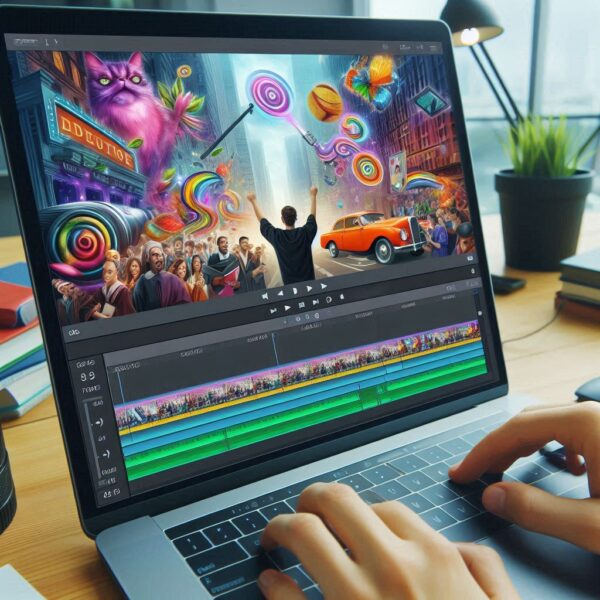Video editing software has become essential for both pros and novices in the digital age. Video editing software has grown dramatically in the US, where industries require high-quality footage and creativity flourishes. Everyone uses these tools to market things, entertain audiences, and tell tales, from independent filmmakers to social media influencers.
Development of Software for Video Editing
Software for video editing has advanced remarkably. Anyone with a computer and a creative spark may now access what was once a sophisticated and costly procedure reserved for professional studios. This accessibility has led to a boom in video production in the USA on a variety of platforms, including YouTube and TikTok.
The journey has been amazing, influenced by both the evolving requirements of consumers and technology improvements. Film reels had to be physically cut and spliced during the tedious and time-consuming editing process in the early days of cinema. The 1980s saw the advent of digital editing, which transformed the field by enabling more accurate and effective computer-based video manipulation. A new era of non-linear editing was made possible by early programs like Adobe Premiere and Avid Media Composer, which made it simple for editors to arrange clips, apply effects, and polish their work.

Video editing software became more widely available as computers became more powerful and more reasonably priced. Consumer-level editing programs like Microsoft’s Windows Movie Maker and Apple’s iMovie were popular in the late 1990s and early 2000s, enabling regular people to produce high-quality videos on their home computers. At the same time, professional software kept developing, with firms like Adobe, Apple, and Blackmagic Design pushing the envelope on capabilities like real-time collaboration, sophisticated colour grading, and visual effects. The range of video editing software available today includes options for both Hollywood filmmakers and amateur content creators, with browser-based editors, cloud-based solutions, and mobile apps further increasing the potential of video production.
Uses in Various Industries
Television and Film:
Although the film industry may be centred in Hollywood, video editing software is democratizing the sector. High-calibre films can now be made by independent filmmakers without the need for enormous resources. Additionally, these tools are used by television production businesses to optimize operations and provide viewers with engaging content.
Advertising and Marketing:
In the cutthroat realm of advertising and marketing, video reigns supreme. With the use of video editing software, brands can produce captivating advertisements and captivating promotional content in their never-ending battle for consumers’ attention. These techniques are crucial for grabbing the attention of the audience, whether it’s through a visually appealing product demonstration or a viral social media campaign.
Education and Training:

Video editing software has become indispensable in the education sector as a result of the shift to online learning. To aid with learning, instructors and trainers can produce interesting instructional films, guides, and presentations. Video content improves the educational process and accommodates a variety of learning styles in settings ranging from primary schools to colleges.
Social media and entertainment
Social media and entertainment have been completely transformed by websites like YouTube, Instagram, and TikTok. Video editing software is used by content producers to create everything from comedy sketches and vlogs to dancing videos and cosmetics lessons. With video editing serving as the foundation, these platforms have opened up new channels for creativity and self-expression.
Video Editing’s Future

Video editing software will develop in tandem with technology. Advances in machine learning and artificial intelligence should make these tools even more potent and user-friendly, streamlining difficult processes and opening up new creative avenues.
Video editing software will only keep expanding in the United States, a country that values creativity and innovation. These tools let people and organizations to tell their experiences to the world, whether for professional filmmaking, advertising campaigns, instructional materials, or self-expression. Video editing software will continue to be an essential component of the creative process as long as there are stories to tell.
